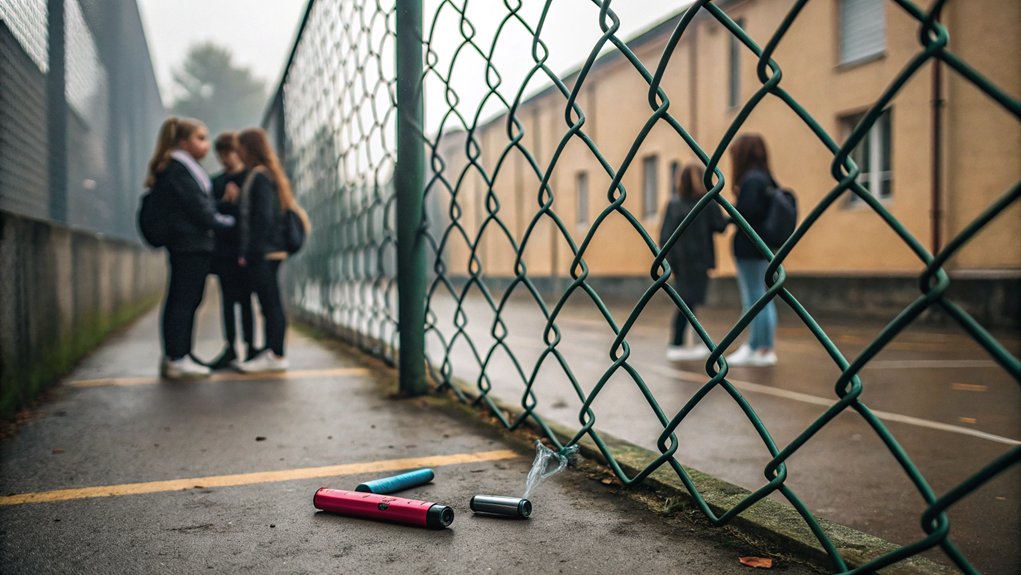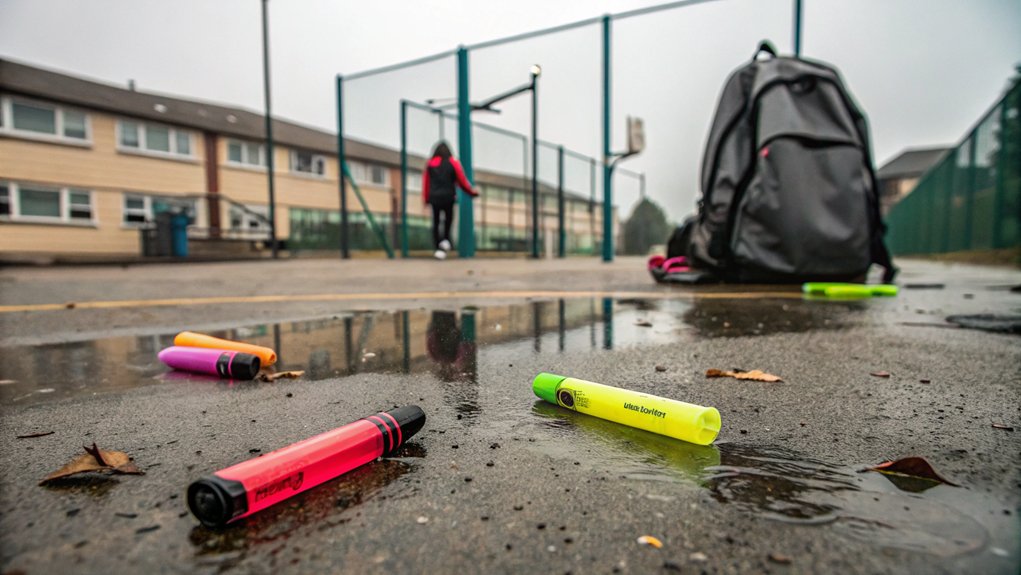Cheshire residents face soaring housing costs and vanishing services after government overhaul. Is your family's welfare at risk? Local communities struggle as policy changes reshape the county's future.
You'll find a concerning trend among UK youth, where 9% of children aged 11-15 now regularly use e-cigarettes - a six-fold increase over the past decade. Nearly half of young users obtain vaping devices from restricted venues, while manufacturers target youth with colourful branding and appealing flavours. With approximately 980,000 British young people involved in vaping activities, this growing epidemic poses serious health risks and environmental challenges that demand immediate attention.

A concerning surge in vaping rates among UK youth has reached alarming levels, with recent data showing that 9% of children aged 11 to 15 in England now regularly use e-cigarettes. This represents a six-fold increase over the past decade, with approximately 980,000 young people across Britain now involved in vaping activities. More than 520,000 youngsters aged 11 to 17 have experimented with vaping at least once or twice, highlighting the growing accessibility of these devices.
The ease of obtaining vaping products has become a significant concern, as nearly half of young users acquire devices from venues where sales to minors are prohibited. Your child's exposure to vape marketing is substantial, with 55% of children reporting awareness of vape advertisements, primarily in shops and online. Manufacturers often target youth through colourful branding and appealing flavours, contributing to the products' popularity among younger demographics.
You'll find that the health implications of this trend are particularly worrying. Young vapers face exposure to harmful chemicals, including heavy metals and volatile organic compounds, while nicotine addiction poses serious risks to adolescent brain development. The British Medical Association has labelled this situation a "growing epidemic," with cases of vaping-related illnesses like EVALI adding to the mounting concerns. The NHS is investing heavily as vaping-related health issues cost £2.5 billion annually.
Your community's environment is likewise suffering, as two vapes are discarded every second in the UK, creating a substantial ecological impact. The government is responding with new regulatory measures, including the Tobacco and Vapes Bill, which proposes stricter controls on vaping products and access restrictions for youth. These measures may include banning flavoured vapes, implementing plain packaging requirements, and raising the legal purchasing age.
While smoking rates among young people have reached their lowest recorded levels, with only 11% of youth in England having tried cigarettes, vaping has emerged as a new challenge. The statistics show an increase from 6% in 2018 to the current 9% among young people, with 4.2% of 11-17 year-olds vaping more than once weekly.
Schools are now intensifying their educational efforts to inform students about vaping risks, recognising that prevention through awareness is vital in addressing this growing public health crisis. The rapid rise in youth vaping demands immediate attention from parents, educators, and policymakers. Your understanding of these trends and active involvement in prevention efforts can help protect the next generation from the hidden dangers of e-cigarette use.
Most-Asked Questions FAQ
How Can Parents Detect if Their Child Is Secretly Vaping at Home?
Watch for sweet odours, hidden devices, and changes in health like chronic coughs. You'll likewise notice behavioural shifts, including anxiety and mood swings. Check trash for pods or cartridges.
What Are the Long-Term Psychological Effects of Vaping Addiction in Teenagers?
You'll face increased anxiety, depression, and suicidal thoughts. Long-term vaping can damage your brain development, impair memory, worsen stress responses, and create a cycle of addiction and mental health struggles.
Do Disposable Vapes Contain Different Nicotine Levels Than Regular E-Cigarettes?
You'll find disposable vapes typically contain maximum nicotine levels of 20mg/ml, similar to regular e-cigarettes, but disposables often come pre-filled while regular vapes let you adjust nicotine strength.
Which Social Media Platforms Are Most Responsible for Promoting Vaping to Youth?
You'll find TikTok is the biggest culprit, followed by Instagram and Snapchat. These platforms actively spread vaping content through influencer marketing, viral trends, and algorithmic recommendations targeting youth.
How Effective Are School Prevention Programs in Reducing Teenage Vaping Rates?
You'll find most school prevention programs haven't greatly reduced teen vaping rates alone. They're more effective when combined with policy changes, community engagement, and thorough education about vaping risks.
